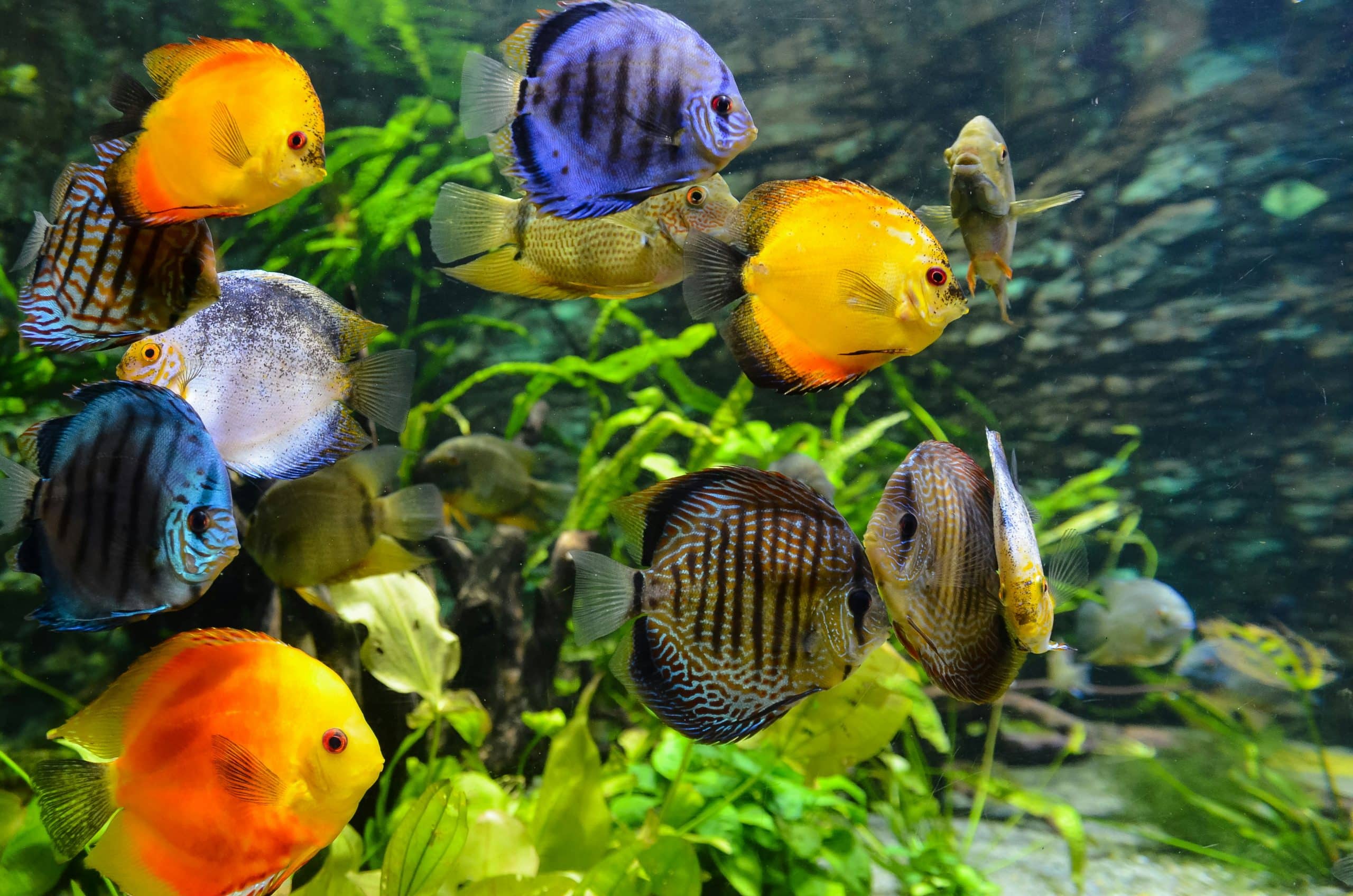How to safely introduce new fish to your aquarium

Aquarium enthusiasts understand the excitement and anticipation that accompanies the task of adding new fish to their collection. But did you know, it’s not as simple as just releasing the fish from the bag into the tank? The process of introducing new fish to your aquarium requires careful attention and precautionary measures to ensure the health and well-being of all the inhabitants, including the newcomers. In this article, you will learn a step-by-step guide on how to add new fish to your aquarium in a safe and healthy manner.
Step 1: Do a Thorough Research
Before you even step foot in the store, it is essential that you understand the needs and behavior of the fish you plan to add to your aquarium. Some fish require specific water conditions, diet, and tank mates to thrive. Understanding the characteristics of your new fish will help you make necessary adjustments in your tank to ensure a harmonious coexistence.
A lire également : How to choose the right size dog for your lifestyle
For instance, some fish prefer a lower pH, while others require a higher one. Understanding these requirements will help you to adjust your water parameters accordingly. Also, consider the size and behavior of the fish. Some fish can be territorial or predatory, and adding them to a tank with smaller or more peaceful species can lead to conflicts or predation.
Step 2: Choosing and Buying the Fish
When deciding on the fish at the store, take your time. Observe the fish closely, looking for any signs of illness or disease. Avoid buying fish from tanks with dead or sick fish. Signs to look out for include erratic swimming, unusual coloration, and visible sores or spots.
Sujet a lire : Homemade pet treats: recipes for healthy snacks
Once you have selected the fish, ask the store employee to bag them up for you. The bag should contain enough water for the fish to swim, and the top should be filled with air to provide the fish with oxygen during the transfer.
Step 3: Acclimating the Fish to Your Tank
The acclimation process is crucial and should be done with utmost care. Sudden changes in water conditions can stress your fish, potentially leading to disease or death.
Start by floating the sealed bag with your new fish in your aquarium for 15 minutes. This allows the water in the bag and the water in the aquarium to equalize temperature, reducing the shock to the fish.
After the temperature has equalized, open the bag and add a small amount of water from your tank to the bag every 10 minutes for the next hour. This slow introduction of your aquarium water will help the fish adjust to your tank’s specific water chemistry.
Step 4: Using a Quarantine Tank
A quarantine tank is a separate tank where new fish are kept for a period before adding them to the main tank. This can help prevent the spread of diseases and parasites to your existing fish population.
For the quarantine process, you will need a separate tank, equipped with a heater and filter. The bacteria in the filter will help break down waste and ammonia, keeping the water quality high. The quarantine period usually lasts for two weeks, during which time you should monitor the fish for signs of illness.
The quarantine tank should mimic the conditions of the main tank as closely as possible. This means you should match the water temperature, pH, and other parameters to those of your main tank.
Step 5: Transferring the Fish to Your Aquarium
Once the quarantine period is over, and you are satisfied that your new fish are healthy, it’s time to transfer them to your main aquarium.
Avoid adding the water from the quarantine tank to your main aquarium, as it may contain parasites or disease organisms. Instead, use a net to catch the fish and gently place them into your main tank.
Remember, patience is key when introducing new fish to your aquarium. Allow them time to adjust to their new home before adding more fish. This will greatly reduce stress and could potentially save you from dealing with disease outbreaks in your tank.
When done correctly, adding new fish to your aquarium can be an exciting and rewarding experience. By following these steps, you are ensuring a safe and healthy introduction of your new pets into their new home.
Step 6: Monitoring the Behavior of Your New Fish
After successfully introducing fish into your tank, your job isn’t over yet. It would be best if you now closely monitored your new fish’s behavior. This is crucial for several reasons. Firstly, it helps you detect any signs of stress or illness early, allowing for timely intervention. Secondly, it can help you understand if the new additions are getting along with their tank mates.
During the first few days, observe how your new fish are eating. If they refuse food or eat less than usual, it could be a sign of stress or illness. Also, watch out for any changes in their swimming pattern or color. Rapid breathing, erratic swimming, or a loss of color are often signs of stress or disease.
Furthermore, keep an eye on the interaction between the new fish and your existing ones. Are they chasing each other? Are there any signs of aggression? Are the new fish hiding constantly? These could be indications of incompatibility, and you might need to rearrange your tank or, in extreme cases, remove the problematic fish.
This monitoring phase is as important as the initial steps because it will help ensure that your fish continue to live in a harmonious and healthy environment. Remember, the goal is to create a tranquil and thriving community within your aquarium.
Step 7: Maintaining Your Aquarium
Maintaining the quality of your tank water is of utmost importance for the well-being of your fish. Regular testing of the water for pH levels, ammonia, nitrite, and nitrate is essential. Most local pet stores sell testing kits that are easy to use. Regular water changes, typically 25% every week, will also help maintain the water quality.
Moreover, it would help if you cleaned your aquarium regularly. Algae build-up can alter the water chemistry and reduce the amount of light that penetrates the tank. Cleaning the glass, decorations, and gravel will not only keep your tank looking good but also ensure a healthy environment for your fish.
Lastly, remember to feed your fish a balanced diet. Overfeeding can lead to obesity and water pollution, while underfeeding can result in malnutrition. Feed your fish small amounts of food several times a day, ensuring all fish get their share.
Conclusion: Enjoy Your Thriving Aquarium
Following these steps diligently will help ensure a smooth transition while adding fish to your aquarium. While it may seem like a lot of work initially, the joy and satisfaction of watching a thriving and harmonious aquarium make it worth the effort.
Remember, the key to success lies in preparation, patience, and continuous monitoring. While every fish is unique and might require special care, these steps will generally apply to all aquarium fish. So go ahead, add that colorful guppy or exotic angelfish to your collection, and enjoy the enchanting world of aquarium keeping.
